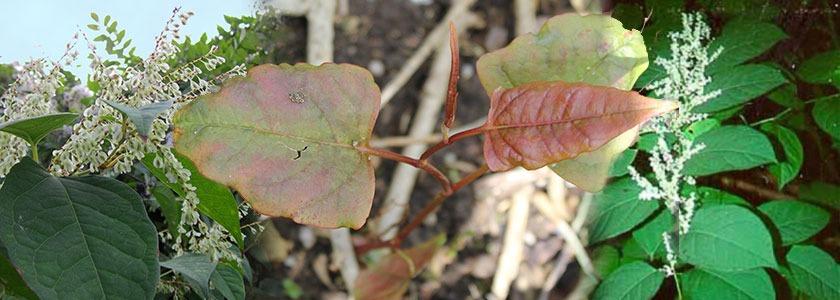Japanese Knotweed - What you need to know
What is Japanese Knotweed?
Japanese Knotweed was originally introduced to the UK in 1825 and was intended to be used as an ornamental garden plant. Unfortunately it was not realised until later the invasive nature of this non-native species. The plant is now recognised as one of the most invasive plants in Britain.
The plant itself begins to appear with fleshy red shoots in the early spring from the underground network of rhizomes which can be 2m deep and 7m wide! These shoots grow rapidly into bamboo like canes with distinctive purple flecks along the stem in the summer and can grow anywhere up to 2.1m tall. During the later parts of summer into early autumn the plants produce creamy-white flowers.
Why is it a problem?
This plant is an extremely invasive species. Japanese knotweed can grow up to 10cm a day. In some cases it can even grow through brick walls and weak concrete so can cause huge amounts of damage to buildings, foundations and paving.
What are the laws surrounding Japanese Knotweed
There are a few different laws surrounding Japanese Knotweed and its growth in the UK. It is listed in Schedule 9 of the “1981 Wildlife and Countryside Act” so that it would be an offence to plant or cause it to grow in the wild. It is not illegal for the plant to be in your garden, however, you must take reasonable steps to control it. If the plant is allowed to spread across property boundaries, some councils can call upon Anti-social legislation and in extreme cases there is provision in the law for a local authority to impose a ‘Species Control agreement’ backed by the Minister of State.
Alongside this there are a few things to consider if there is Japanese Knotweed growing on your property and you are trying to sell your house since it can potentially drop the price of a house sale by 10%. It is your responsibility to check in your garden to make sure that the plant is not growing. You will be asked to complete a TA6 form which will be given to you for conveyancing purposes. On this form you must declare whether you have the plant in your garden, where it is growing and a management plan for its control.
House purchases can be held up or cancelled by mortgage lenders unless there is a treatment plan in place to control it. As a result of these factors and laws it makes it even more important to control the invasive weed.
How can I treat a Japanese knotweed problem?
Treating Japanese Knotweed can be a tricky process. There are a few methods that you can employ to get good control. Generally late summer is the best time to apply since chemical treatments will be taken deep down into the rhizomes.
To begin with you should use a glyphosate-based spray such as: Roundup ProActive, Roundup ProVantage, Gallup Biograde Amenity or Gallup Home & Garden (for amateur use)
- Foliar Spraying – A knapsack sprayer can be used to spray the tall flowering stems from late summer using long lances. The leaves of the plant should be covered sufficiently but should not be drenched to the point of dripping
- Cut-stem: Cut tall stems down in summer and apply a measured dose onto the open, hollow stem (quickly before it seals over)
- Stem Injection – Specialist tool to inject glyphosate directly into the stem of a live plant between the second and third growing nodes Apply to flowering stems from late summer through to October
For more information on the control of Japanese Knotweed and more detail on the above treatment options, please take a look at our “How to get rid of Japanese Knotweed” By Problem page.





